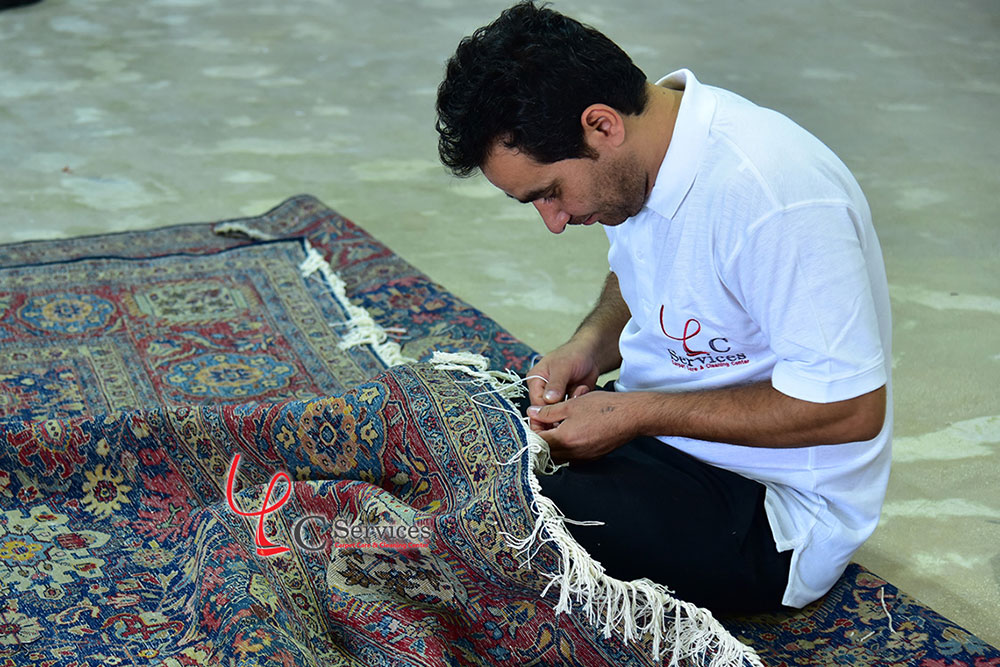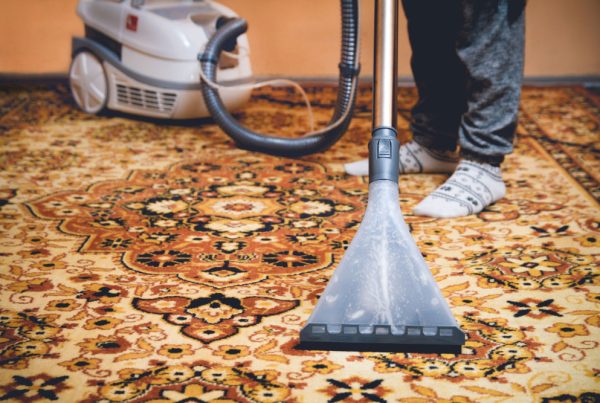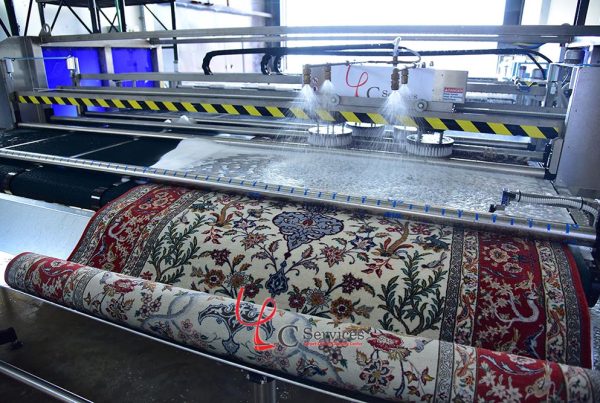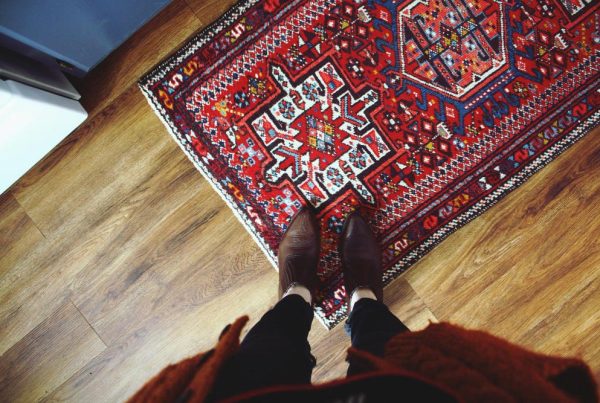Choosing the best carpet and rug repair provider is about more than fixing a fringe or closing a tear. It is about protecting history, preserving value, and ensuring that every intervention honors the original weave. In Lebanon, where homes often feature hand-knotted Persian and antique pieces, careful, conservation-minded repairs matter. This guide explains how to identify expert workmanship, what repair methods deliver durable results, and how to care for your rug after service so the work lasts. Whether you are in Beirut or in the mountains, you can use these criteria to evaluate quality with confidence.
What “Best” Means in Rug Repair
The word best should describe a consistent, methodical approach rather than a quick fix. Leading workshops apply fiber science, traditional techniques, and transparent documentation to every job. They do not simply hide damage; they stabilize structure and preserve authenticity. When you assess providers across Lebanon, look for the following markers of excellence.
1. Conservation Mindset
The priority is to retain as much original material as possible while restoring function and appearance. Repairs are designed to be sympathetic to the rug’s age, origin, and artistry. Interventions are neat, proportionate, and respectful, never heavy-handed.
2. Structured Intake and Testing
Before any needlework, an expert team will document the rug, map fiber and construction, and perform colorfast tests. This prevents dye migration, informs yarn selection, and sets the correct order of operations for safe, lasting results in Beirut and beyond.
3. Yarn and Dye Matching
Repair yarns must match diameter, twist, and luster. Color matching is performed in neutral daylight to harmonize with the rug’s current, aged palette. The goal is seamless blending, not a too-new patch that calls attention to itself.
Top Repair Techniques That Protect Value
Different damages require different solutions. The best carpet and rug repair work uses the technique that fits the problem, construction, and long-term stability.
Fringe Repair and Root Securing
Fringes are not decorative extras; they are the exposed ends of the warp foundation. When the root weakens, pile can begin to slip. Expert repair secures the root with discreet stitching and, if necessary, rebuilds fringe bundles to original spacing and rhythm.
Edge Overcasting and Binding
Edges protect the last warps and wefts from abrasion. Overcasting with matched yarns stops unraveling on hand-knotted rugs. On modern or machine-made carpets, carefully scaled serging or binding provides a clean, durable perimeter without adding excessive bulk.
Invisible Reweaving for Holes and Splits
When foundation yarns are broken, the repair begins by re-establishing warps and wefts. Then new knots are introduced to recreate the missing pile and pattern. Proper reweaving respects knot type and pile height so the surface reads naturally from all angles.
Guard Border and Selvage Reconstruction
Historic rugs often lose strength at the guard borders. Rebuilding these areas stabilizes geometry and restores visual completeness. The best work maintains tension balance to avoid waves or ripples after the rug is released from the frame.
Color-Run Reduction and Tone Harmonization
If past spills or incorrect cleaning caused dyes to migrate, localized, reduction-based techniques can soften bleed lines. The objective is gentle correction that restores pattern definition while preserving patina.
Signs You Are Dealing with Expert Craft
- Repairs are difficult to spot at normal viewing distance, yet remain honest upon close inspection.
- Stitches follow the logic of the original weave rather than crossing it for speed.
- Edges sit flat, corners are squared, and borders track straight after blocking.
- No hard coatings, glue lines, or over-thick edges that catch shoes and vacuums.
- Clear before and after photos, with a written description of methods and materials.
Common Pitfalls to Avoid
Even well-meaning shortcuts can shorten a rug’s life. When evaluating services in Lebanon, watch for these warning signs.
- Glue-only “repairs” that crack over time and make future conservation difficult.
- Oversized serging that narrows borders visually and traps grit at the edge.
- Color touch-ups that look flat or opaque under light, masking rather than blending.
- Skipping testing and washing steps, which can lock soil into the repair area.
Aftercare That Extends Repair Life
Even the best repair benefits from smart, everyday habits, whether your home is in Beirut or in another region.
- Use a breathable pad: It reduces lateral movement, protects edges, and eases shear stress on repairs.
- Vacuum gently: Suction-only on delicate pile. Avoid aggressive beater bars over fringes and edges.
- Rotate seasonally: A quarter-turn every few months evens wear and sunlight exposure.
- Manage sunlight: Sheers or UV film slow fade and preserve color balance.
- Blot spills promptly: Use a white cloth and avoid scrubbing; consult a professional if residues persist.
When Repair Becomes Restoration
Sometimes localized repair is not enough. If damage extends into foundation yarns over a large area, or if borders and motifs are missing, the project shifts toward restoration. This involves frame mounting, warp and weft rebuilds, motif recreation, and extensive pile work. An ethical provider explains the scope and helps you decide how much intervention suits the rug’s age, use, and significance in your home.
How to Evaluate Providers in Practice
- Ask about testing: Fiber identification and colorfast checks should be standard.
- Review comparable work: Before and after photos of similar damages demonstrate capability.
- Discuss techniques: The team should explain why a specific method fits your rug’s construction.
- Confirm finishing steps: Blocking, grooming, and edge stabilization are part of a complete job.
- Request documentation: A brief record of methods and materials supports future care.
Key Takeaways
- The best carpet and rug repair is conservation-minded, structurally sound, and visually discreet.
- Technique must match construction: overcasting, reweaving, border reconstruction, and careful color correction each have a place.
- Quality shows in edges that lie flat, borders that track true, and repairs that blend under natural light.
- Aftercare in Lebanon’s varied microclimates—coastal humidity, mountain dryness—plays a major role in durability.
Disclaimer
This article provides general educational guidance for evaluating carpet and rug repair quality. Every textile differs in fiber, dyes, construction, and condition. Always perform colorfast testing in an inconspicuous area and avoid aggressive chemicals or techniques. For valuable or fragile pieces, consult qualified professionals in Beirut or other regions of Lebanon to determine the safest, most appropriate approach.



